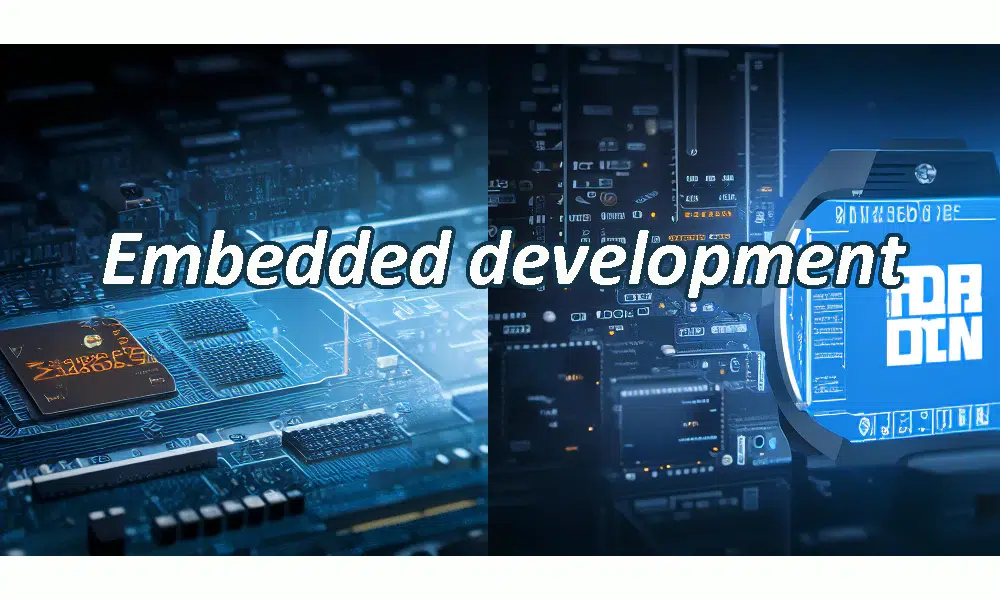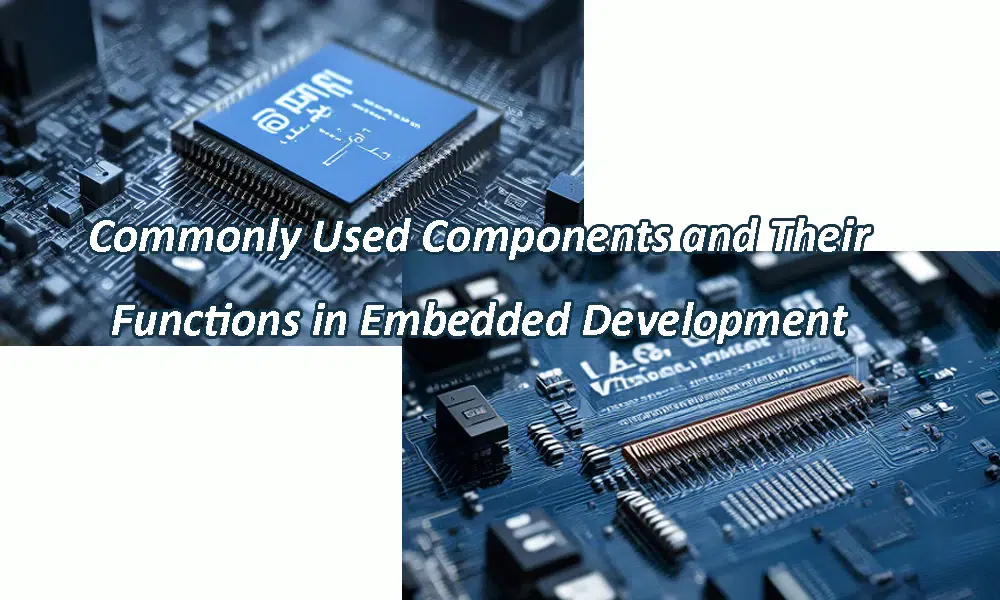
Here’s an introduction to embedded development:
● Understanding Embedded Systems:
Embedded systems are computing devices that are designed to perform dedicated functions within larger systems. They can be found in various applications such as consumer electronics, automotive systems, medical devices, industrial automation, and more.
● Hardware Platforms:
Embedded systems are built upon hardware platforms that typically include a microcontroller or microprocessor, memory (both volatile RAM and non-volatile ROM/Flash), input/output interfaces (such as GPIO, UART, SPI, I2C), and sometimes additional peripherals like timers, analog-to-digital converters (ADC), and communication interfaces (Ethernet, Wi-Fi, Bluetooth).
● Software Development:
Embedded software is responsible for controlling the hardware and executing the desired functionality. This software is often written in low-level languages like C or C++, although higher-level languages like Python are becoming increasingly popular for certain applications. Real-time operating systems (RTOS) are often used in embedded development to manage tasks, scheduling, and resources efficiently.
● Development Tools:
Embedded developers use a variety of tools to design, develop, and debug embedded systems. Integrated Development Environments (IDEs) such as Eclipse, Visual Studio, or specific IDEs provided by microcontroller manufacturers are commonly used. Compilers, assemblers, debuggers, and simulators are essential tools for writing and testing embedded software.
● Testing and Debugging:
Testing embedded systems can be challenging due to the real-time nature of many applications and the interaction between hardware and software components. Techniques such as unit testing, integration testing, and hardware-in-the-loop (HIL) testing are employed to ensure the reliability and functionality of embedded systems. Debugging tools like JTAG debuggers, logic analyzers, and oscilloscopes are commonly used to diagnose and fix issues.
● Optimization and Efficiency:
Embedded developers must optimize both hardware and software to meet performance, power consumption, and cost constraints. Techniques such as code optimization, power management, and system-level design optimizations are used to maximize the efficiency of embedded systems.
● Security and Reliability:
With the increasing connectivity of embedded devices to the internet and other networks, security and reliability are critical considerations in embedded development. Developers must implement security measures such as encryption, authentication, and secure boot mechanisms to protect against cyber threats and ensure the reliability of embedded systems.
Overall, embedded development requires a combination of hardware and software expertise, along with a deep understanding of the constraints and requirements of the target application. It’s a rewarding field that offers opportunities to work on a wide range of exciting and innovative projects.
Commonly Used Components and Their Functions in Embedded Development
In embedded development, the selection and design of various components are crucial stages. This article will provide a detailed introduction to some commonly used components in embedded development and their functions, aiding in a better understanding of the design and application of embedded systems.
Microcontrollers
Microcontrollers are the core components of embedded development. They are integrated circuits that include a series of hardware components such as a central processing unit, memory, input/output interfaces, timers/counters, etc. The role of microcontrollers is to control and coordinate various parts of the embedded system, executing specific operations according to program instructions. When selecting microcontrollers, it is necessary to choose different models and specifications based on the system’s requirements and application scenarios.
Sensors
Sensors are devices that convert physical quantities from the real world into electrical signals. They can collect environmental information such as temperature, humidity, pressure, displacement, etc., providing data input for embedded systems. Choosing the appropriate sensors is crucial for the performance and stability of embedded systems. When selecting sensors, factors such as sensitivity, accuracy, range, and stability need to be considered.
Actuators
Actuators are devices used to control and adjust physical quantities in the real world, such as motors, solenoid valves, LED lights, etc. They convert control signals from microcontrollers into specific operations, realizing the control and adjustment functions of embedded systems. When selecting actuators, factors such as drive mode, control precision, response speed, etc., need to be considered.
Memory
Memory components are used to store program code and data, including RAM, ROM, EEPROM, etc. They play important roles in embedded systems because they can store and retrieve data and instructions generated during program runtime. When selecting memory, factors such as capacity, read/write speed, reliability, etc., need to be considered.
Communication Interfaces
Communication interfaces are used to facilitate data exchange between microcontrollers and other devices or networks, including I2C, SPI, UART, etc. They enable embedded systems to transfer data and communicate with external devices, facilitating information sharing and exchange. When selecting communication interfaces, factors such as transmission speed, data format, interface type, etc., need to be considered.
Power Management Unit
The power management unit is responsible for providing stable power supply to embedded systems, including batteries, power adapters, etc. They ensure a stable power supply for microcontrollers, sensors, actuators, etc., guaranteeing the stable operation of the entire system. When selecting power management units, factors such as power supply stability, efficiency, lifespan, etc., need to be considered.
Transient Voltage Suppressors
Transient voltage suppressors are components used to protect embedded systems from lightning-induced overvoltage and current surges, including varistors, gas discharge tubes, etc. They can absorb lightning-induced overvoltage and current surges, protecting the components of the entire system from damage. When selecting transient voltage suppressors, factors such as breakdown voltage, response speed, reliability, etc., need to be considered.
Other Components
In addition to the aforementioned common components, other components may also be used in embedded development, such as resistors, capacitors, inductors, etc., as well as various switches, buttons, LED indicator lights, and other human-machine interaction components. The selection and use of these components will depend on specific application scenarios and requirements.
In summary, embedded development involves a wide variety of components, each with its specific roles and functions. When designing and applying embedded systems, it is necessary to fully consider the performance and usage scenarios of various components, select components reasonably, and optimize their configurations to improve the overall performance and stability of the system. Additionally, attention should be paid to the compatibility and interchangeability of components to avoid compatibility issues or irreplacability, which may bring additional risks and costs to the system.











